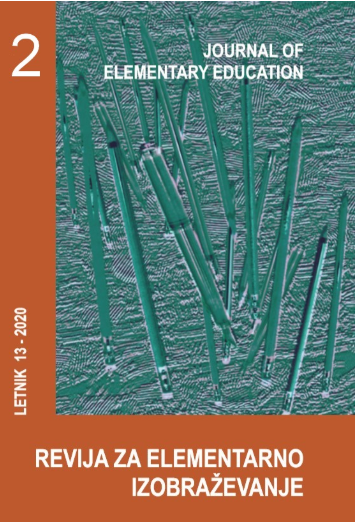Learning Environment Variables and the Efficacy of Student Learning in Secondary School in Abak Local Government, Akwa Ibom State
DOI:
https://doi.org/10.18690/rei.13.2.113-130.2020Abstract
Four research questions and four null hypotheses were formulated to guide the study. A simple random sampling technique was used in selecting 34 respondents from each 6 schools, with a sample size of 204 was selected from the population of 1,518. The instrument titled LEVSLEQ was used to elicit response from the respondent. The reliability of the research instrument yielded a co-efficient of 0.82. The data was analyzed using dependent t-test and was tested at .05 level of significance. The findings indicated that environmental variable studied influence students’ learning effectiveness.
Downloads
References
Anderson, J. R. (1993). Problem Solving and Learning. American Psychologist, 48(1), 35–44
Asuquo, B. B. (2006). Impact of Classroom Climate on Students’ Critical Thinking among Senior Secondary School Students in Uyo Metropolis. An unpublished (B. Ed.) Seminar, University of Uyo, Uyo Akwa Ibom State.
Bandele, S. O. (2002). Administration of Continuous Assessment in Tertiary Institution in Nigeria. Journal of Educational Foundations and Management, 1 (1): 289–296.
Clifford, M. M (1972). Effects of Competition as a Motivational Techniques in the Classroom. American educational Research Journal 9 (1), 123-137
Cotton, K. (2001). New Small Learning Communities: Findings from recent literature. Northwest Regional Education laboratory.
Denga, D. I. (2002). Guidance and Counselling in Schools and Non-school Settings. Calabar: Rapid Educational Publisher.
Essien, E. I. (2009). Efficacy of learning Environment and learners’ Demonstration. Learning in Urban Local Education Committee. An Unpublished (B.Ed.) Project, Faculty of Education, University of Uyo, Uyo, Akwa Ibom State.
Fraser, B. J (2002). Classroom Learning Environment: Retrospect, Context and prospect. Second International Handbook of Science Education, 1191-1239
Freiberg, H. J (1999). School Climate: Measuring, Improving and Sustaining Healthy Learning Environments: Philadelphia, PA: Falmer Press
Lawal, F. (2003). Students Reference Book on Learning and Remembering Techniques. Lagos: Scholastic and Allied Production Ltd.
Clifford, M. M (1972). Effects of Competition as a Motivational Techniques in the Classroom. American educational Research Journal 9 (1), 123-137
John, H. F, Miller, P. H and Miller, S. A (1985). Cognitive Development. Prentice-Hall
Ogunlade, J. C. (2006). Learning Environment and Educational Attainment in some school children in western Nigeria. Journal of Education, 7, 1–17.
Okon, J. I. (2003). School Location: A correlation of students’ reading Attention span. In Calabar south locality. Unpublished (B.Ed.). Project, Faculty of Education, University of Calabar.
Salvin, R. E (1994). Educational psychology: Theory and Practice (London, Aliyn and Bacon).
Sunday, A. T. (2008). Impacts of structured Learning Environment on students’ study habits in Mbo Local Government Area. Unpublished NCE, Seminar, Akwa Ibom State College of Education, Afaha Nsit.
Downloads
Published
Issue
Section
License
Copyright (c) 2020 Abisola Oladeni Sakirudeen, Ekanem Uwe

This work is licensed under a Creative Commons Attribution 4.0 International License.
